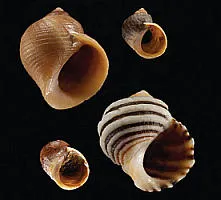
Ecology
From Individuals to Ecosystems
Michael Begon, Colin R. Townsend
- English
- ePUB (handyfreundlich)
- Über iOS und Android verfügbar
Ecology
From Individuals to Ecosystems
Michael Begon, Colin R. Townsend
Über dieses Buch
A definitive guide to the depth and breadth of the ecological sciences, revised and updated
The revised and updated fifth edition of Ecology: From Individuals to Ecosystems – now in full colour – offers students and practitioners a review of the ecological sciences.
The previous editions of this book earned the authors the prestigious 'Exceptional Life-time Achievement Award' of the British Ecological Society – the aim for the fifth edition is not only to maintain standards but indeed to enhance its coverage of Ecology.
In the first edition, 34 years ago, it seemed acceptable for ecologists to hold a comfortable, objective, not to say aloof position, from which the ecological communities around us were simply material for which we sought a scientific understanding. Now, we must accept the immediacy of the many environmental problems that threaten us and the responsibility of ecologists to play their full part in addressing these problems. This fifth edition addresses this challenge, with several chapters devoted entirely to applied topics, and examples of how ecological principles have been applied to problems facing us highlighted throughout the remaining nineteen chapters.
Nonetheless, the authors remain wedded to the belief that environmental action can only ever be as sound as the ecological principles on which it is based. Hence, while trying harder than ever to help improve preparedness for addressing the environmental problems of the years ahead, the book remains, in its essence, an exposition of the science of ecology. This new edition incorporates the results from more than a thousand recent studies into a fully up-to-date text.
Written for students of ecology, researchers and practitioners, the fifth edition of Ecology: From Individuals to Ecosystems is anessential reference to all aspects of ecology and addresses environmental problems of the future.
Häufig gestellte Fragen
Information

Chapter 1
Organisms in their Environments: the Evolutionary Backdrop
1.1 Introduction: natural selection and adaptation
- The individuals that make up a population of a species are not identical: they vary, although sometimes only slightly, in size, rate of development, response to temperature, and so on.
- Some, at least, of this variation is heritable. In other words, the characteristics of an individual are determined to some extent by its genetic make‐up. Individuals receive their genes from their ancestors and therefore tend to share their characteristics.
- All populations have the potential to populate the whole earth, and they would do so if each individual survived and each individual produced its maximum number of descendants. But they do not: many individuals die prior to reproduction, and most (if not all) reproduce at a less than maximal rate.
- Different ancestors leave different numbers of descendants. This means much more than saying that different individuals produce different numbers of offspring. It includes also the chances of survival of offspring to reproductive age, the survival and reproduction of the progeny of these offspring, the survival and reproduction of their offspring in turn, and so on.
- Finally, the number of descendants that an individual leaves depends, not entirely but crucially, on the interaction between the characteristics of the individual and its environment.
